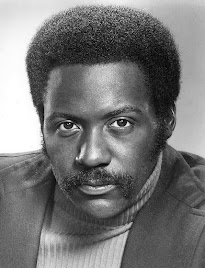Who Was This Black Ninja ?
Early Life
Bessie Coleman was born on January 26, 1892, in Atlanta, Texas, the tenth of thirteen children. Her parents were sharecroppers, and her father was of Native American and African American heritage while her mother was African American. Growing up in poverty, Bessie worked in the cotton fields while attending a segregated one-room school. She showed early determination, walking miles to attend school and excelling in math.
Aviation Dream
As a young woman, Bessie worked as a manicurist in Chicago. There, she heard World War I veterans talk about flying and became fascinated with aviation. At the time, no flight schools in the U.S. accepted women or African Americans. Encouraged by Black newspaper publisher Robert S. Abbott, she saved money and moved to France in 1920.
In France, she trained at the Caudron Brothers’ School of Aviation in Le Crotoy. On June 15, 1921, Coleman earned her pilot’s license from the Fédération Aéronautique Internationale (FAI)—becoming the first African American woman and the first Native American woman to hold a pilot’s license.
Career & Triumphs
Returning to the U.S., Bessie quickly gained fame as “Queen Bess.” She specialized in barnstorming, performing daring stunts like loop-the-loops, figure eights, and parachute jumps at airshows. She became a symbol of hope and pride for African Americans, inspiring many to pursue aviation despite racial and gender barriers.
Coleman also used her platform to speak out against racism and discrimination. She refused to perform at shows that segregated audiences, insisting on equality even in the 1920s Jim Crow era. Her dream was to open a flying school for African Americans so others could follow in her footsteps.
Personal Life
Bessie Coleman never married and had no children. She was intensely focused on her career and her mission to inspire others. Friends described her as fearless, determined, and charming. She balanced her fame with speaking engagements, often addressing African American communities about education, aviation, and self-reliance.
Awards & Recognition
During her lifetime, formal aviation awards for women and African Americans were rare, and Coleman didn’t receive major official honors before her death. However:
-
She was celebrated in Black press outlets like The Chicago Defender.
-
She became the first licensed Black female pilot in the world, which in itself was a monumental triumph.
-
After her death, many schools, streets, and organizations were named in her honor, including Bessie Coleman Drive at O’Hare International Airport in Chicago.
Tragic Death
On April 30, 1926, in Jacksonville, Florida, Coleman was preparing for a May Day airshow. While flying in an open-cockpit Curtiss Jenny biplane, she was in the passenger seat without a seatbelt (she needed to look over the side for a planned parachute jump). The plane suddenly went into a dive and flipped. Coleman fell from 2,000 feet and died instantly. The pilot, William Wills, also died when the plane crashed.
She was only 34 years old.
Legacy
Although her career was cut short, Bessie Coleman’s legacy is enormous:
-
She paved the way for later Black aviators like the Tuskegee Airmen.
-
In 1977, she was posthumously inducted into the National Women’s Hall of Fame.
-
In 1995, the U.S. Postal Service issued a Bessie Coleman commemorative stamp.
-
Her story continues to inspire pilots, women, and people of color worldwide.
Bessie Coleman proved that with courage and determination, even the highest barriers can be broken.












